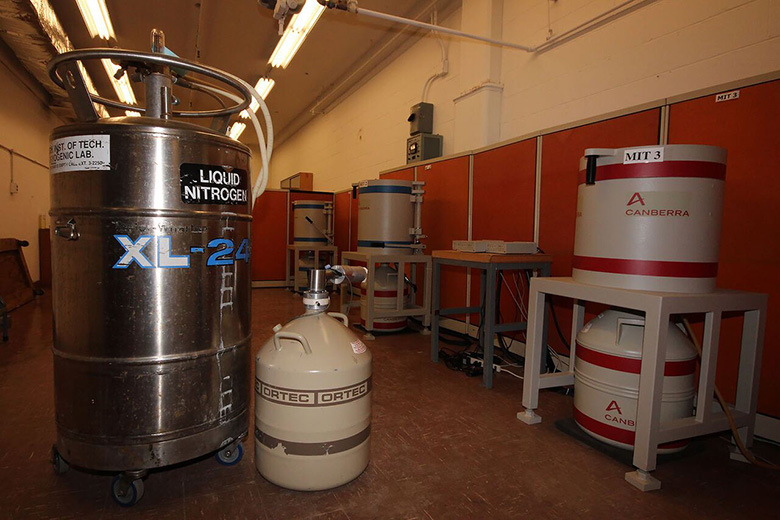Neutron Activation & Elemental Analysis
The MIT-NRL has several facilities that are useful for trace elemental analysis and for the production and analysis of radioisotopes.
Neutron Activation Analysis
The primary method for elemental analysis at the MIT-NRL is Neutron Activation Analysis (NAA). Elemental analysis by NAA first uses neutrons generated by the reactor to create radioactive isotopes from the stable isotopes in a sample material. These radioisotopes are then measured using gamma spectroscopy (a more detailed description of NAA is given below). MIT and outside researchers who wish to analyze materials by NAA should contact Michael Ames.
The two components of an NAA can also be applied separately to:
- Produce radionuclides in a variety of forms for use as tracers in physical, chemical, and biological fate and transport studies. Radiotracers can be useful for flexible lab-scale studies of uptake and transport in physical, chemical, and biological systems.
- Detect, identify, and measure the presence of radioactivity in natural or manmade materials.

Further details about NAA at NRL are available here.
Radionuclide Production, Radioassays
The NRL’s NAA irradiation and gamma spectroscopy facilities can also be used separately for either the production of radionuclides or for radioassay services. The production of radiotracers can be useful for lab-scale studies of uptake and transport in physical, chemical, and biological systems. Radiotracers can be produced in a variety of chemical and physical forms. The use of NRL’s gamma spectroscopic systems for detection and identification of trace amounts of radioactive materials can be useful for the study of either naturally occurring radioisotopes or radioisotopes present due to anthropogenic contamination.
For inquiries about Neutron Activation & Elemental Analysis research and services, please contact Michael Ames.
